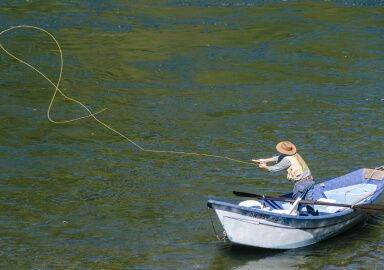Long-tail Red Snapper
Long-tailed red snappers are deepwater marine fish of the Indo-Pacific region and are popular and important for sport and food.
View 2 listings
2
listings
–
price starting from
1
countries
–
to the nearest trip
Where and When?
Both species of deep-water red snapper are distributed in the Indo-Pacific region from the Red Sea southwards to Mozambique, and then eastwards past northern Australia to Hawaii and then back north-west to Japan. The Japanese name “Onaga” is commonly used for these fish in many areas. Both red snappers are basically deepwater fish and do not come close inshore, even as juveniles.
The depth range is given as 90-400 m. (300-1 310 ft.), and they tend to be found near structure such as rocky outcrops and wrecks. Coral reefs are generally too shallow for long-tailed red snappers. Living in deep water, the time of day for fishing is generally not important and so daylight fishing is generally preferred for ease and safety. In the more tropical areas both species may be caught equally through the year while, in temperate regions, summertime is usually more productive than winter.
About Long-tail Red Snapper
Two species can be referred to as the long-tailed red snapper: the “true” one (Etelis coruscans), and the deepwater red snapper (Etelis carbunculus). They are similar looking, found in the same region, behave in a similar manner, and are often caught side by side. The former usually has pronounced and dramatic extensions to the lobes of the tail fin, hence its name.
Long-tailed red snappers belong to the snapper family, the Lutjanidae, and have the typical deep-bodied but elongate “snapper” shape. They are red, pink, or sometimes “ruby-red” above, with white underparts. The mouths are armed with single rows of sharp conical teeth plus one or two pairs of enlarged canine teeth. The maximum length attained is 127 cm (50 in.) with a mass of 8.2 kg. (18 lbs).
It is thought that the long-tailed red snappers can live for about 30 years, feeding on an assortment of fish, cephalopods and crustaceans. In some tropical areas they spawn year-round and, although they can move large distances, no important migrations are known. The sexes are similar and large aggregations have been found and are probably related to spawning activity.
How to Catch?
All long-tailed red snapper are caught from boats, and large-scale commercial operations use large ships, with extensive long-line equipment. Traditional capture was by handline, from small boats, and this continues in many areas, particularly around isolated small islands. As the fish live at great depths, equipment has now mostly been upgraded and thin, strong braid and power reels have replaced thicker nylon and simple hand lines in small-scale fisheries.
Recreational fishing, that takes place from small boats at many localities scattered over the Indo-Pacific region, usually entails using a standard medium to heavy spinning rod and a variety of terminal tackle. As the depths are often quite great, live bait is usually impractical and dead bait must be well attached to stay on the hook during a 1 000 ft. plus drop to where the fish are feeding.
Vertical jigging is popular in some areas and can rapidly get to the depths required, while plastics and other lures are used where they are practical. Long-tail red snappers are not the largest members of the family, and do not usually give a dramatic fight when hooked hundreds of feet below the boat, but they are magnificent fish and make for excellent photo-opportunities.




